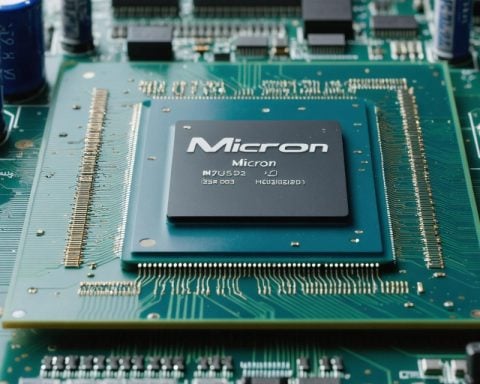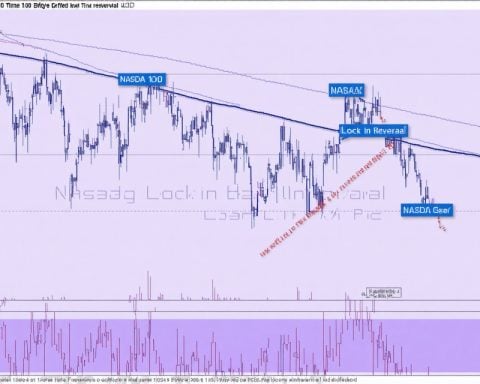- Nvidia has achieved significant growth with a $3 trillion market cap, driven by demand for its leading graphics processors, essential in the AI sector.
- SoundHound AI experienced an 835% stock increase in 2024, partly due to Nvidia’s investment in its cutting-edge conversational AI technology.
- Nvidia’s unexpected divestment from SoundHound led to a 28% drop in SoundHound’s stock, prompting investor reassessment.
- SoundHound continues to innovate in voice-activated technology, partnering with Mercedes-Benz and Kia to enhance in-vehicle AI capabilities.
- Despite ambitious revenue forecasts, SoundHound’s high price-to-sales ratio raises concerns about sustained growth beyond recent acquisitions.
- Investors are advised to approach SoundHound’s high valuation with caution amid shifting AI investment trends and Nvidia’s recent decisions.
Nvidia’s shimmering reputation in the tech world has been built upon its unmatched graphics processors, hailed as crucial components in the AI revolution. This AI titan has seen its market cap swell by a staggering $3 trillion, a testament to the relentless global demand for its cutting-edge chips. Yet, Nvidia’s calculated moves extend beyond its hardware prowess; in a bold venture, it invested in rising AI stars, thrusting SoundHound AI into the spotlight with an astounding 835% stock surge in 2024.
Despite SoundHound’s meteoric rise, Nvidia’s latest financial disclosure revealed a startling absence. The tech behemoth had quietly divested its shares, triggering a frenzied sell-off that shaved 28% off SoundHound’s value in a single day. This unexpected turn raises an important question for investors: Should they reassess their positions?
SoundHound stands as an innovator in conversational AI, revolutionizing voice-activated technology. From quick-service restaurants to luxury automobiles, its AI prowess extends across industries. Recent collaborations with automotive giants like Mercedes-Benz and Kia showcase its sophisticated voice assistants that cater to drivers’ every inquiry. The addition of in-vehicle commerce capabilities underscores SoundHound’s ambition to redefine convenience on the road.
Yet, despite its impressive portfolio and promising revenue projections, SoundHound’s stock commands a daunting price-to-sales ratio. While forecasting a revenue leap to $175 million in 2025, the looming challenge lies in sustaining this growth beyond one-time contributions from its Amelia acquisition. With Nvidia’s latest move casting shadows of speculation, perhaps its high-flying valuation is a cue for investors to exercise caution.
February’s financial revelations from both Nvidia and SoundHound could provide clarity. But as the landscape of AI investing shifts, SoundHound’s valuation remains a cautionary tale for those tempted by its rapid ascent.
Nvidia’s Sudden Exit: Is SoundHound AI a Sound Investment or a Risky Bet?
How-To Steps & Life Hacks for Evaluating AI Stocks
1. Assess Market Trends: Follow the latest developments in AI and tech markets. AI’s growing influence in various sectors can indicate potential investment opportunities.
2. Review Financial Health: Analyze a company’s financial reports to understand its revenue streams, profit margins, and cash flow.
3. Examine Partnerships: Collaborations with industry leaders (e.g., SoundHound’s deals with Mercedes-Benz and Kia) can bolster a company’s market position.
4. Consider Valuation Metrics: Price-to-sales ratios and earnings forecasts can indicate whether a stock is overvalued or has growth potential.
Real-World Use Cases
SoundHound AI’s technology has found real-world applications in several domains:
– Automotive: With partnerships like those with Mercedes-Benz and Kia, SoundHound enhances in-car user experiences through advanced voice assistants.
– Restaurants: Quick-service industries use SoundHound AI to streamline customer service via voice-activated ordering systems.
– Retail: AI-driven in-vehicle commerce systems are being developed to improve on-the-go shopping and payment solutions.
Market Forecasts & Industry Trends
– The AI market is predicted to continue its rapid expansion, potentially reaching a $500 billion valuation by 2025 (source: IDC).
– The growth of conversational AI, primarily driven by advancements in machine learning models, is expected to dominate sectors such as retail, automotive, and healthcare.
Reviews & Comparisons
– SoundHound vs. Competitors: Compared to players like Google Assistant or Apple’s Siri, SoundHound offers a more customizable platform for partners, making it a preferred choice for OEMs seeking branding control.
– Nvidia’s Chips Comparison: Nvidia’s GPUs remain crucial for AI computations, often preferred to AMD and Intel for their superior power and efficiency in deep learning tasks.
Controversies & Limitations
– Valuation Concerns: SoundHound’s high price-to-sales ratio raises concerns about overvaluation, though its technological advancements provide some risk mitigation.
– Nvidia’s Divestment: The recent exit from SoundHound leads to questions about the latter’s long-term viability and raises speculative fears among investors.
Features, Specs & Pricing
– SoundHound’s Technology: Its Houndify platform excels in natural language understanding and real-time conversational analysis, which are critical for seamless voice interactions.
– Nvidia’s GPUs: Known for CUDA cores and efficient architectures, often priced at a premium due to their unmatched capabilities in AI and gaming.
Security & Sustainability
– Data Privacy: SoundHound employs strict data security protocols, vital for protecting sensitive user interactions in industries like automotive and retail.
– Sustainability Efforts: Nvidia focuses on reducing emissions and increasing energy efficiency in its production processes.
Insights & Predictions
– If SoundHound can effectively leverage its technology and partnerships, it could sustain its growth trajectory. However, maintaining momentum beyond 2025 may prove challenging without continued innovation and market expansion.
Pros & Cons Overview
Pros:
– Leading-edge conversational AI technology
– Strong industry partnerships
– Potential for market expansion
Cons:
– High valuation concerns
– Investor uncertainty following Nvidia’s exit
Actionable Recommendations
– Diversify Investments: Instead of committing heavily to one company, consider spreading investments across multiple AI ventures.
– Stay Updated: Regularly revisit financial disclosures and market trends to adjust investment strategies accordingly.
– Watch for Innovations: Keep an eye on future technological breakthroughs from SoundHound and competitors to assess impacts on stock health.
For further insights on AI and technology investments, visit Nvidia and SoundHound.
By weighing the opportunities and risks, investors can better navigate the volatile AI investment landscape.




















